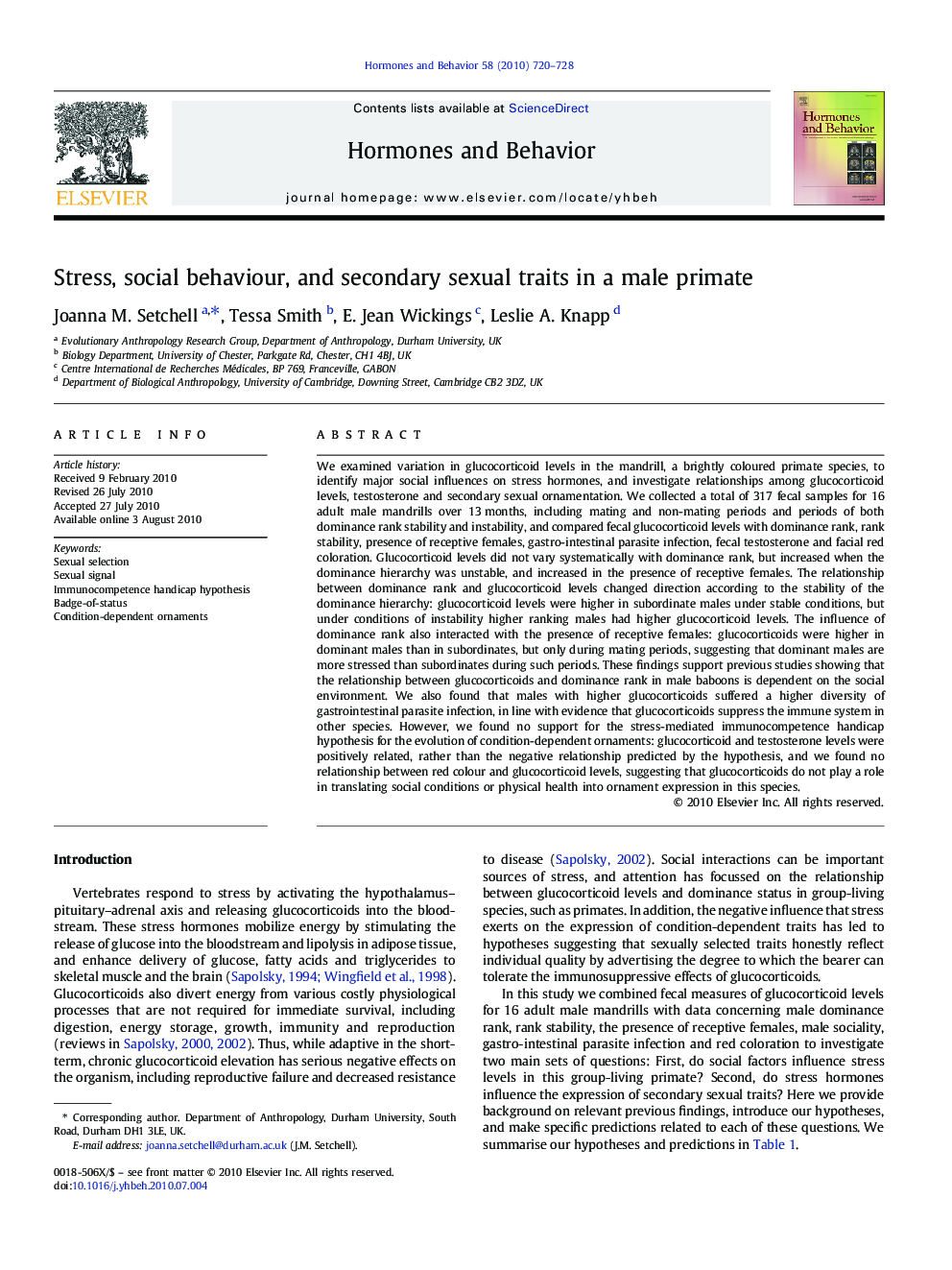| کد مقاله | کد نشریه | سال انتشار | مقاله انگلیسی | نسخه تمام متن |
|---|---|---|---|---|
| 324036 | 540880 | 2010 | 9 صفحه PDF | دانلود رایگان |

We examined variation in glucocorticoid levels in the mandrill, a brightly coloured primate species, to identify major social influences on stress hormones, and investigate relationships among glucocorticoid levels, testosterone and secondary sexual ornamentation. We collected a total of 317 fecal samples for 16 adult male mandrills over 13 months, including mating and non-mating periods and periods of both dominance rank stability and instability, and compared fecal glucocorticoid levels with dominance rank, rank stability, presence of receptive females, gastro-intestinal parasite infection, fecal testosterone and facial red coloration. Glucocorticoid levels did not vary systematically with dominance rank, but increased when the dominance hierarchy was unstable, and increased in the presence of receptive females. The relationship between dominance rank and glucocorticoid levels changed direction according to the stability of the dominance hierarchy: glucocorticoid levels were higher in subordinate males under stable conditions, but under conditions of instability higher ranking males had higher glucocorticoid levels. The influence of dominance rank also interacted with the presence of receptive females: glucocorticoids were higher in dominant males than in subordinates, but only during mating periods, suggesting that dominant males are more stressed than subordinates during such periods. These findings support previous studies showing that the relationship between glucocorticoids and dominance rank in male baboons is dependent on the social environment. We also found that males with higher glucocorticoids suffered a higher diversity of gastrointestinal parasite infection, in line with evidence that glucocorticoids suppress the immune system in other species. However, we found no support for the stress-mediated immunocompetence handicap hypothesis for the evolution of condition-dependent ornaments: glucocorticoid and testosterone levels were positively related, rather than the negative relationship predicted by the hypothesis, and we found no relationship between red colour and glucocorticoid levels, suggesting that glucocorticoids do not play a role in translating social conditions or physical health into ornament expression in this species.
Graphical AbstractFigure optionsDownload high-quality image (402 K)Download as PowerPoint slideResearch Highlights
► Glucocorticoid levels increase when the dominance hierarchy is unstable, and in the presence of receptive females.
► Glucocorticoid levels are higher in subordinate males under stable conditions, but under conditions of instability higher ranking males have higher glucocorticoids.
► Males with higher glucocorticoids harbour more species of gastrointestinal parasites.
► Glucocorticoid and testosterone levels are positively related, but secondary sexual trait expression is not related to glucocorticoid levels.
Journal: Hormones and Behavior - Volume 58, Issue 5, November 2010, Pages 720–728